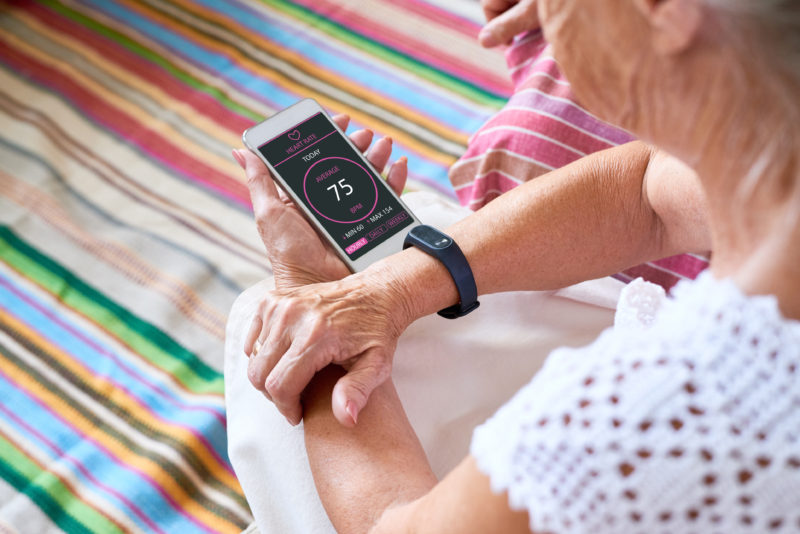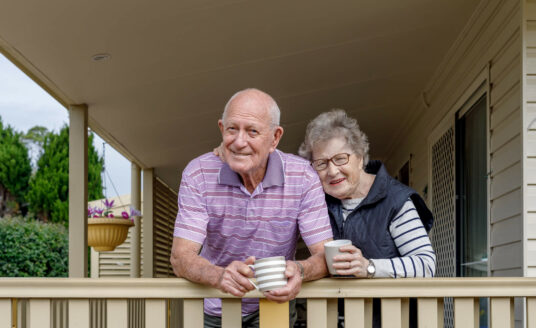Some people call it “monitored independence;” a compromise between senior adults and the people who care for and about them. Whether they live in a long-term care community or in their own home, technology is advancing to provide a protective environment for seniors as they begin to feel the effects of aging on their bodies and minds.
The inability of concerned family members and staff in long-term care communities to be ever-present (coupled with Mom or Dad’s desire to not have someone physically watching them for hours on end) is requiring technology to become more sophisticated and personalized than ever. Below are just some of the ways that technology improves quality of life for seniors.
Monitoring and Managing Health and Home
The primary question from family members with a senior adult living alone is “what’s happening — or not happening — when no one is with them?”
Are they eating well? Taking their medications? Have they fallen? Are they sick? Why haven’t they answered my phone call? Today, there are numerous ways to monitor what is happening in the home without actually being there.
For example, activity sensors give adult children information about their parents’ daily activities. This includes:
- whether or not they are taking their medications correctly
- how many times they’ve opened the refrigerator or bathroom doors
- if they have used the microwave
The sensors can also pick up if behavior patterns have changed. Some systems will even alert the adult child if something seems out of the ordinary. All of this information is easily accessible by logging on to a website.
Technology also can give family members remote access to a loved one’s doctor’s appointment. And for those worried about a senior who tends to become confused or lost, GPS pendants and wristbands can be monitored to track where the wearer is located.
Tools to Help Your Senior Loved One
Wearable remote fall detection devices, like those by MyNotifi, alert family and friends if a senior falls and can speed up the time it takes for them to receive emergency assistance.
Digital pill dispensers such as MedMinder dispense medications to seniors. All a caregiver has to do is fill the medicine tray, and they can remotely schedule when medications are to be taken. The device unlocks to make the medications available and beeps if they have not been taken, notifying the family caregiver.
Reminder Rosie is a talking clock that can be programmed to remind seniors to take their medication via a prerecorded voice message from a caregiver. Personal messages can also be recorded with other reminders such as “it’s time to exercise,” “remember we’re coming to visit tomorrow,” or “I love you.”
To view the activity levels of Mom or Dad, smartphones can be linked to a Fitbit worn by the parent so their kids can make sure they are moving regularly.
Seniors are also discovering the capabilities of the Amazon Echo and other personal assistant devices. Echo can control lights and thermostats in the home, and remind seniors to take their medications or call a friend or relative for help.
But how are seniors adapting to all this technology? Studies show they are increasingly adopting it, and generally approve of its use if it provides them with a degree of continued independence. Sixty-seven percent of older adults now use the Internet and 46% use smartphones. This is a dramatic increase compared to just a few years ago.
Technology in Senior Living Communities
In long-term care, assisted living, and retirement communities, some of the same technologies are being used to monitor the movements of residents and when out-of-the-ordinary events occur. Called “passive monitoring,” the effort is to balance regular supervision with safety and care while respecting residents’ desire for privacy and independence.
Another important development is virtual care technology, which enables offsite medical professionals to deliver care remotely to a senior living community. Because a resident’s medical issue may not be critical, a virtual consult with an offsite provider can allow them to assess the situation via video and recommend treatment without the additional disruption of a trip to the hospital. Residents can use this method to participate in routine virtual visits with their physician as well.
Some communities have taken advantage of personalized music programs using iPods downloaded with the music senior residents enjoyed throughout their lives. This can help them to reconnect with their past and relieve confusion and agitation due to dementia.
Welcome to the Future: Technology Improves Quality of Life
Improving quality of life is a big focus in the field of technology, which has continued to work toward more personalization-based advancements. Certain technologies are able to learn the individual habits and preferences of their senior adult users—what they are likely to forget or overlook, and what needs the most attention in their daily lives.
Robot pets are also on the market for senior adults. Companion robots can act as a calendar reminder, alarm clock, and connect to home security systems while doubling as a friendly face. Bonus – no cleanup afterwards is required.
Stoves are even being developed that notify users if they have been left on for too long.
As the U.S. population ages, technology improves quality of life and makes it increasingly possible to live a more monitored, but still independent life, longer and safer than ever.
Learn more about how Bethesda is integrating technology into our senior care efforts, and find more technology advancements like these on our blog.
Back to All Posts


